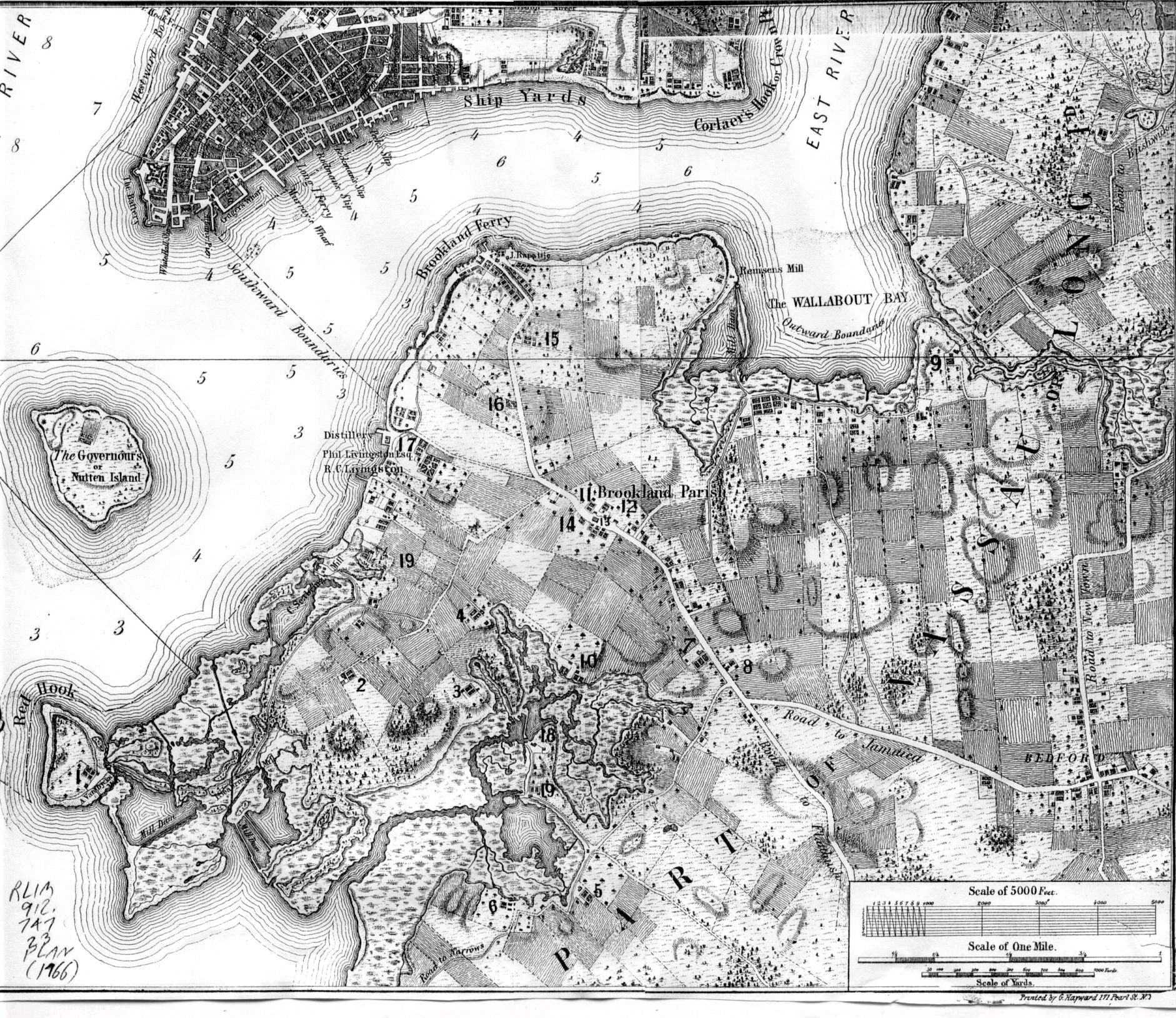the canal was built in 1869
?????
Before it was dredged as a canal, it was Gowanus Creek. Here's a graphic of Brooklyn circa 1766. Gowanus Creek is at the bottom:

Posted on 03/17/2011 9:13:33 AM PDT by Pharmboy
Edited on 03/17/2011 10:39:53 AM PDT by Admin Moderator. [history]
Historians believe plans to dredge the polluted Gowanus Canal in Brooklyn could also dig up priceless revolutionary war artifacts.
Brooklyn's Gowanus Canal is most known for being a muddy-brown, foul-smelling notorious dump site near Park Slope. For Kimberly Maier, who runs the Revolutionary War Museum called The Old Stone House, it is full of historic potential. "There could be bones, there could be uniforms, their could be muskets, bullets.
Any leftover elements of battle," said Maier. The Gowanus Canal runs through the site of the Battle of Brooklyn. Fought in August of 1776, it was the first official battle of the Revolutionary War.
NEW YORK - MARCH 02: A teen walks across the... While the American soldiers lost the battle, it ultimately helped them win the war. The so-called Marylanders, a regiment of 400 soldiers from Maryland, fought a brutal battle on their own to hold off British Soldiers and keep an escape route clear for countless other American soldiers who had been ambushed. It's not clear where the bodies of the hero Marylanders are buried.
Many have speculated they could be beneath the ground of what's now a Staples on Fourth Avenue -- or they could be beneath the Gowanus Canal. "The British had a tendency to bury traitors, as they called them, where they lay and so there could be Marylanders under Staples or at the bottom of the Canal," said Maier. But curious historians are at the mercy of the Environmental Protection Agency, which will be conducting the cleanup. The EPA is mandated by law to preserve historical artifacts uncovered during the cleaning of a Superfund site, but it's at their discretion and it's not their priority.
The EPA's main concern is to rid the water and contaminates that have accumulated from nearby factories since the canal was built in 1869. The EPA has not set a start date for the dredging of the Gowanus Canal.
A spokesperson tells NBC New York it is currently reviewing which cleanup method is most appropriate, but when the work begins, the community will be closely watching.
Great post!
Well, we might dig a canal, but we WILL dig an old outhouse..Montana Magazine did a feature on us, (March/April 2011) using ELECTROMAGNETIC IMAGERS while digging in Bozeman last summer.........If you own a Ghost Town, Hotel site, etc., especially in Montana and other western states, we are interested in “Share cropping for bottles”! Details on our website.
Throw a few arrowheads in the canal....That’ll make the world stand still.
School is all PC...and that means Civil War, Civil War, Civil War.
Think Mason and Dixon. Plenty of Old Maps and text around.
revolutionary war artifacts
the canal was built in 1869
?????
Quite a contrast to later Maryland militia, eh?
Maryland had its own Tea Party, too.
You never know, maybe they'll find Jimmy Hoffa! Mythbusters couldn't find him at Giant's stadium, ya know... :-)
the canal was built in 1869
?????
Before it was dredged as a canal, it was Gowanus Creek. Here's a graphic of Brooklyn circa 1766. Gowanus Creek is at the bottom:

Old LINE State...not State Line...LOL.
Thanks you...glad to see you here!
*d’oh!*
The man who commanded the 400 was the New York-born, Lord Stirling (William Alexander) who would have been Washington's best general if he could have stayed sober; but, certainly his best battlefield commander and fighter notwithstanding. Among a cast of very interesting officers (Washington, Hamilton, Knox, Greene, Arnold, Putnam, Lee, Gates, et. al.) Alexander was arguably THE most interesting.
Thank you so much for your kind words and your additions to this thread.
If they are also looking outside the canal in the area, then I am certainly mistaken. But if they are looking in the canal, I would expect “stuff” from 1870 and more recent.
You're quite welcome.
The former editor in me wishes they'd included a hyphen, calling it "Old-Line State." As it stands, it's an old state of the "line" type. :-)
Up until the early 2000’s the harbor masters would tell any ships with barnacle problems to move to the Gowanus Canal overnight. The water was so toxic it would kill the barnacles in under 8 hours. It’s not easy to kill barnacles...
I highly doubt there is any natural material or corrosive metal objects of historical importance that be be found inside the canal, though possibly there could be objects behind the breakwalls, though again, the chemicals probably got to them.
Disclaimer: Opinions posted on Free Republic are those of the individual posters and do not necessarily represent the opinion of Free Republic or its management. All materials posted herein are protected by copyright law and the exemption for fair use of copyrighted works.